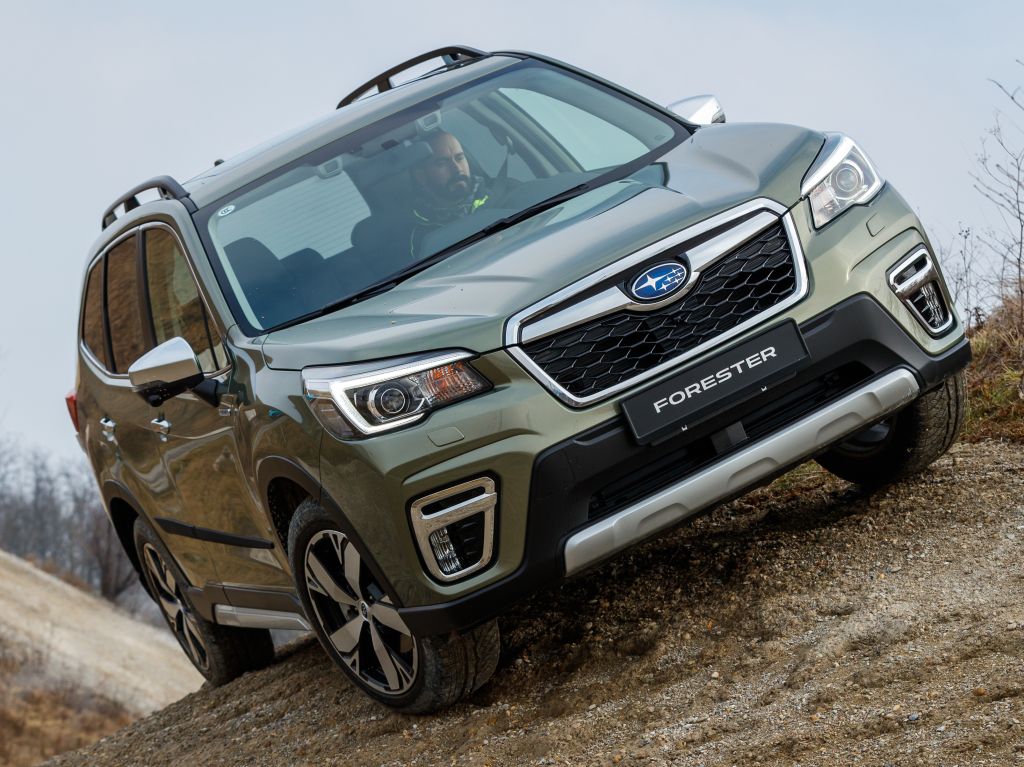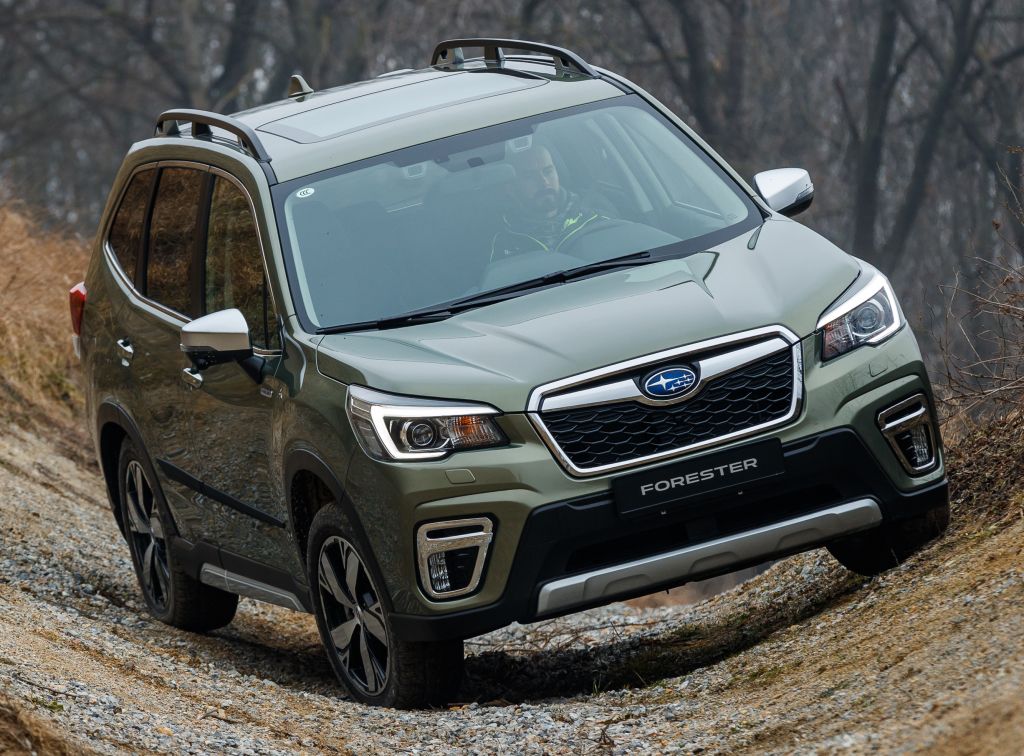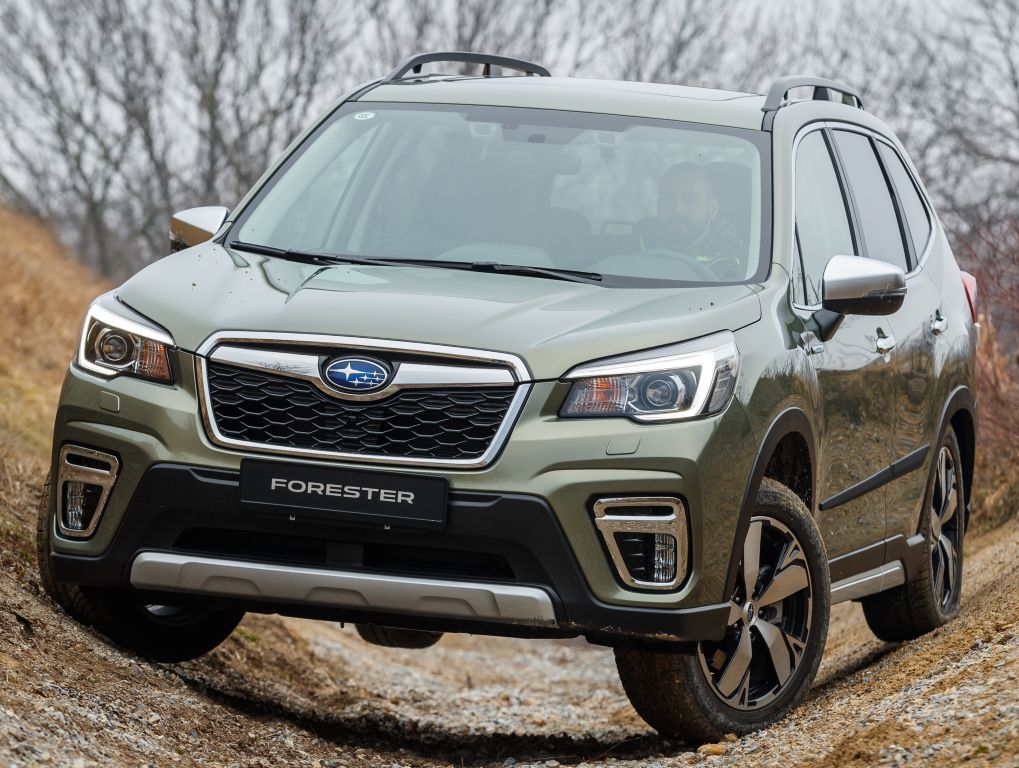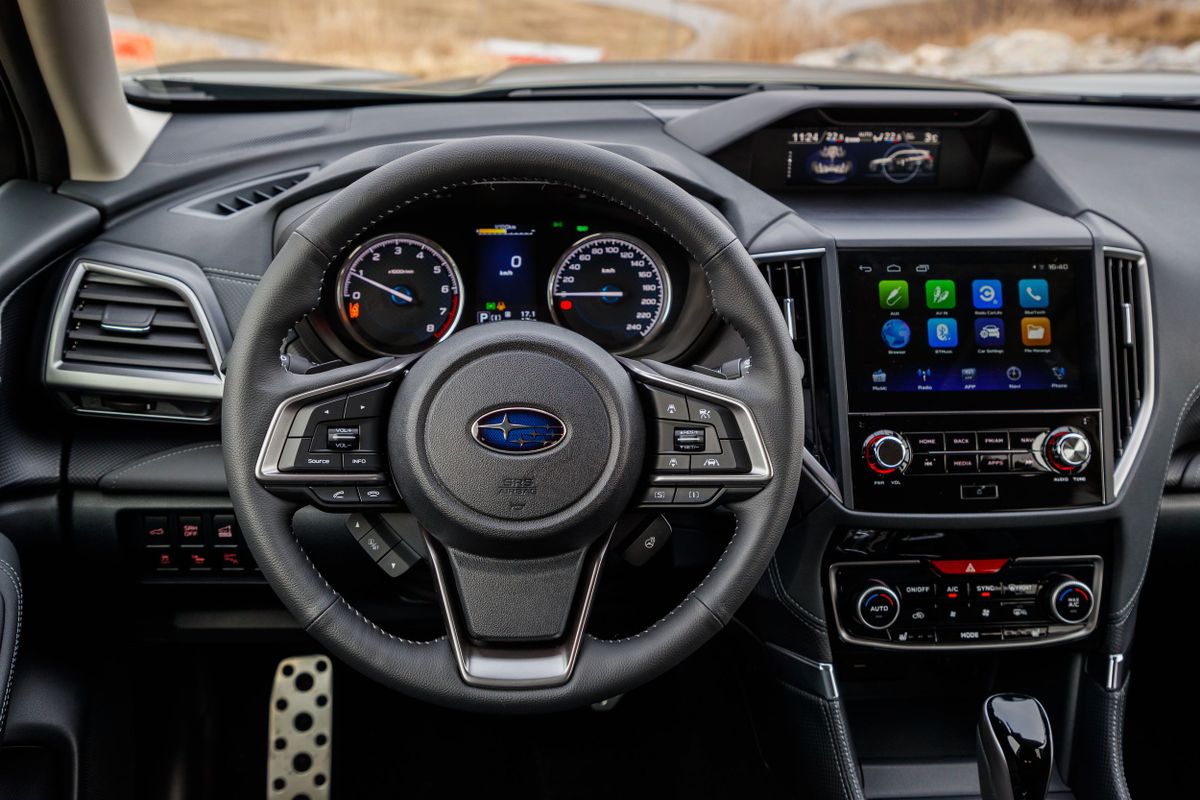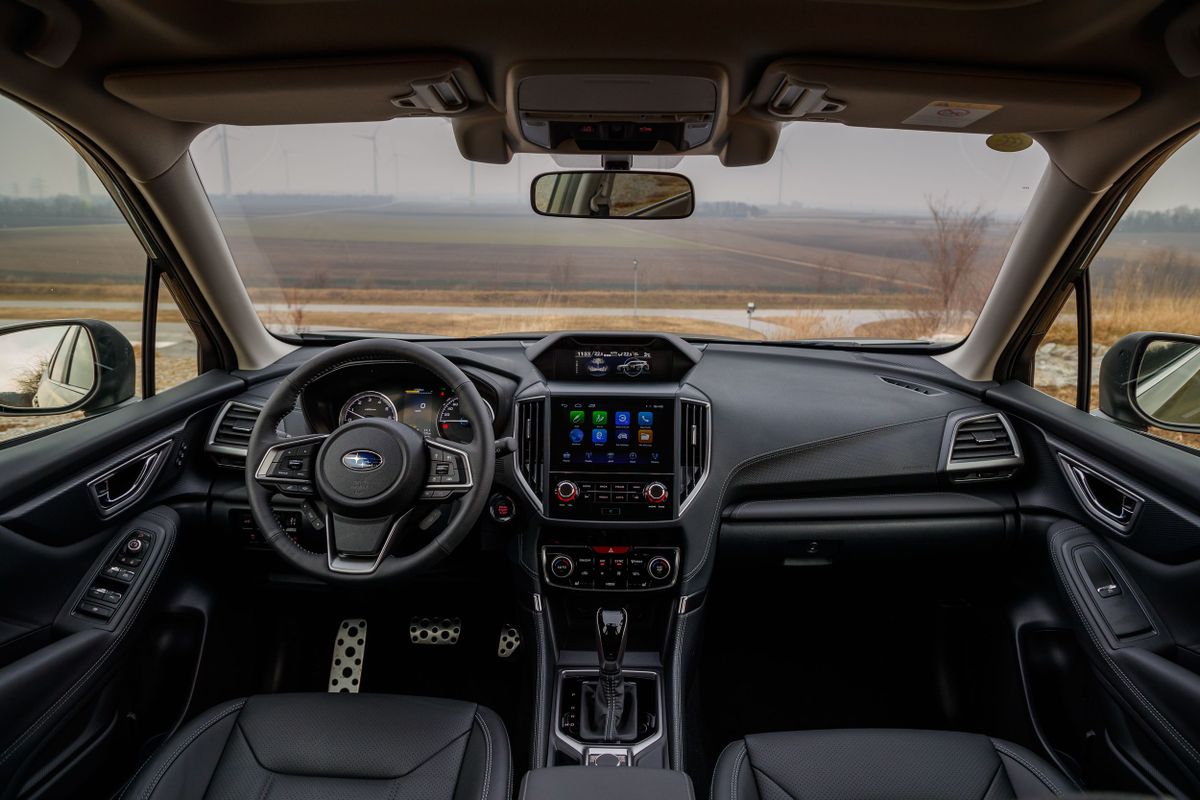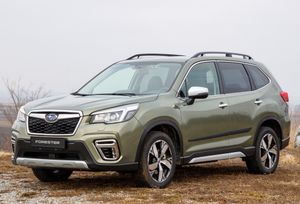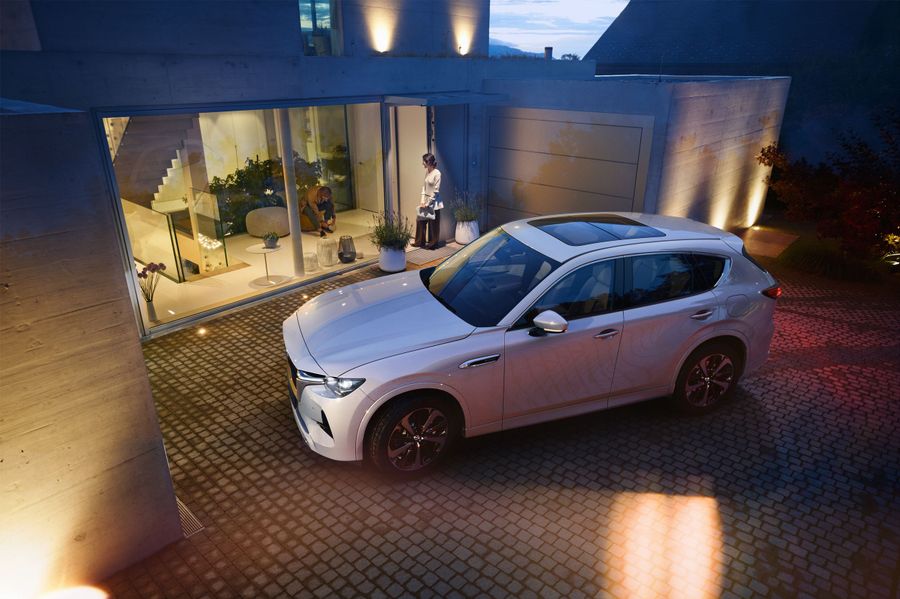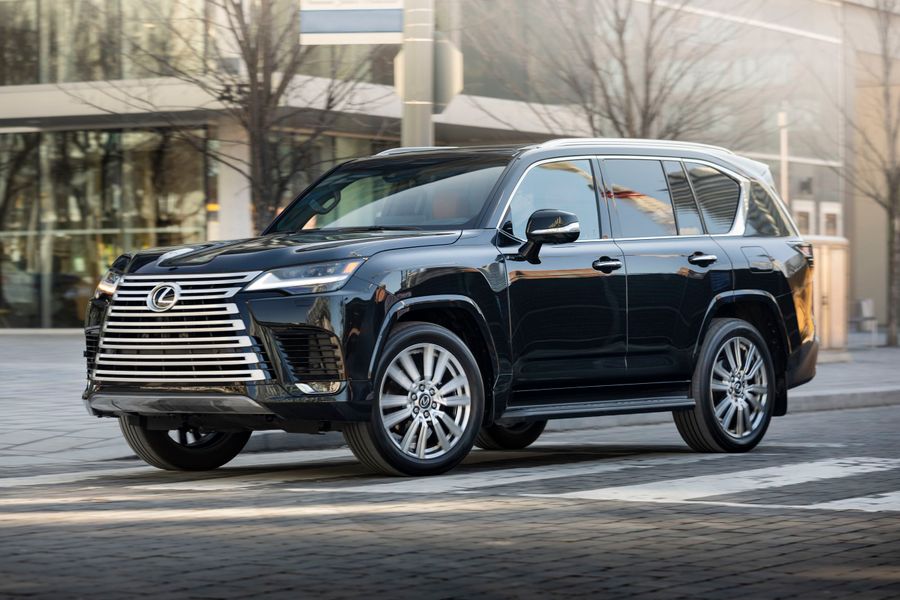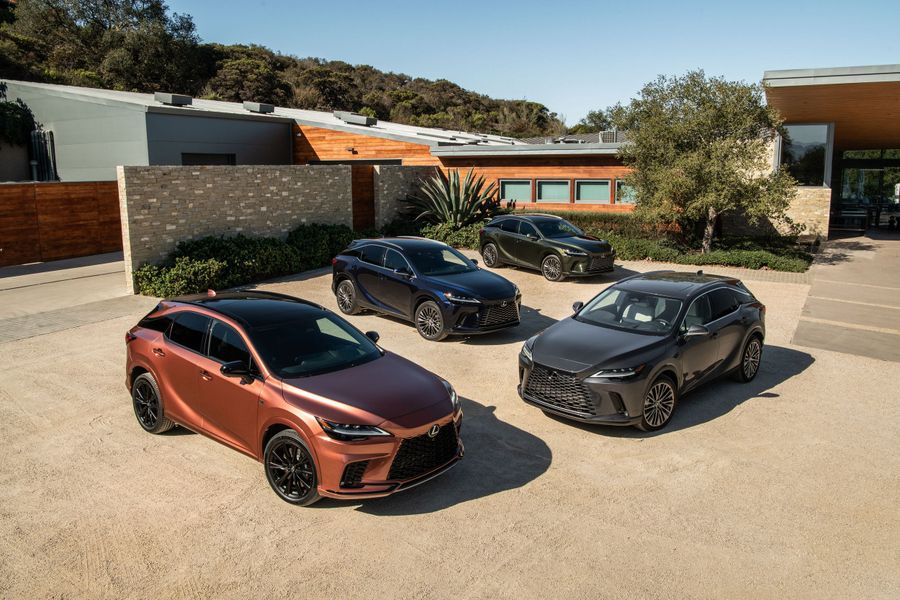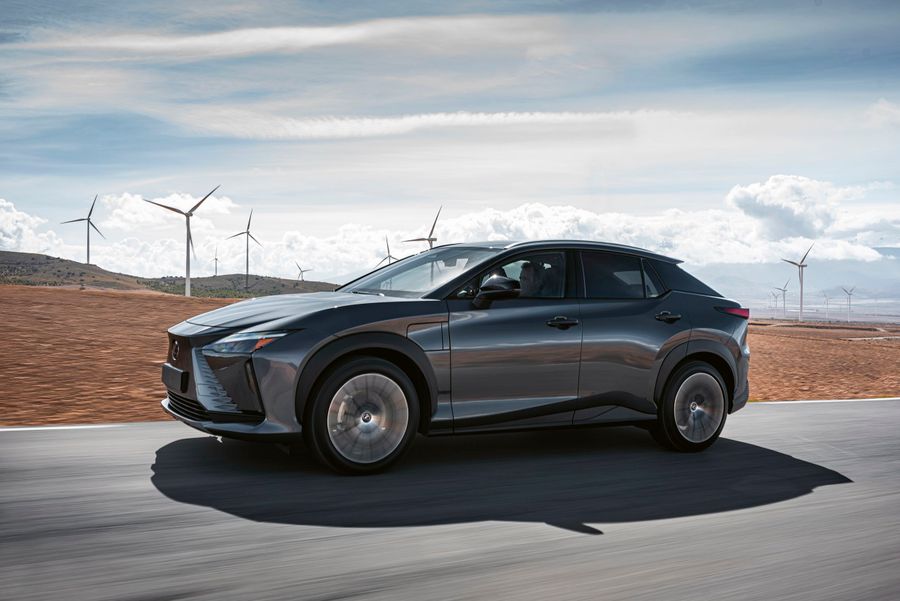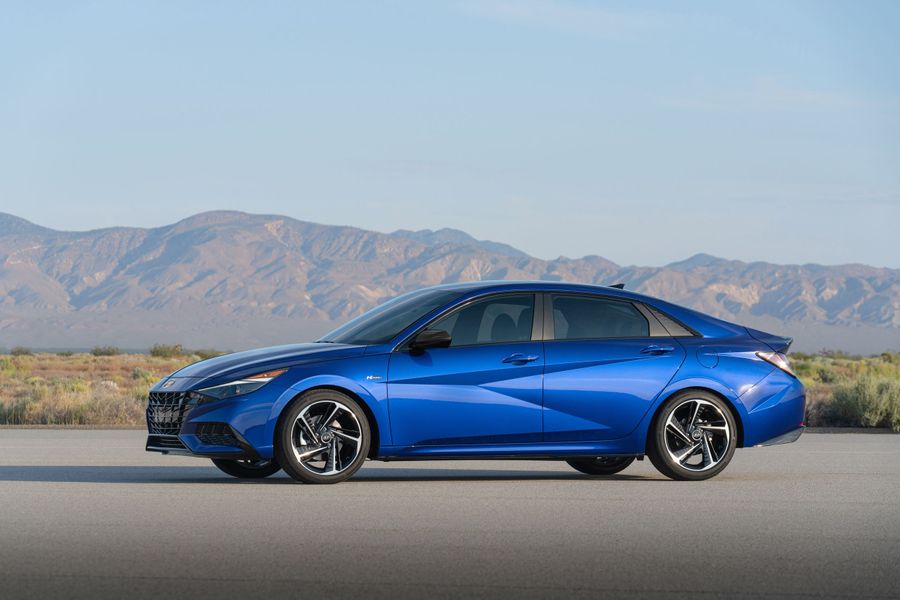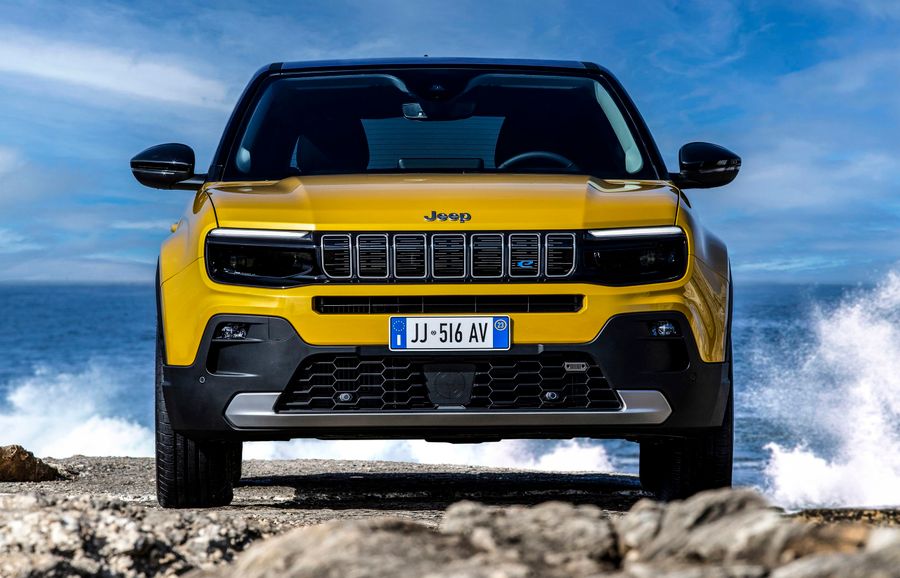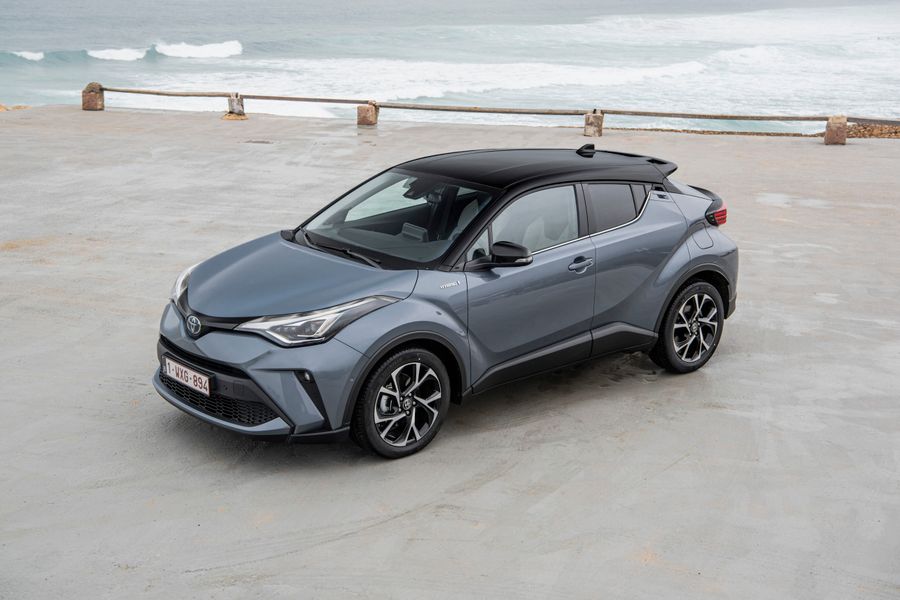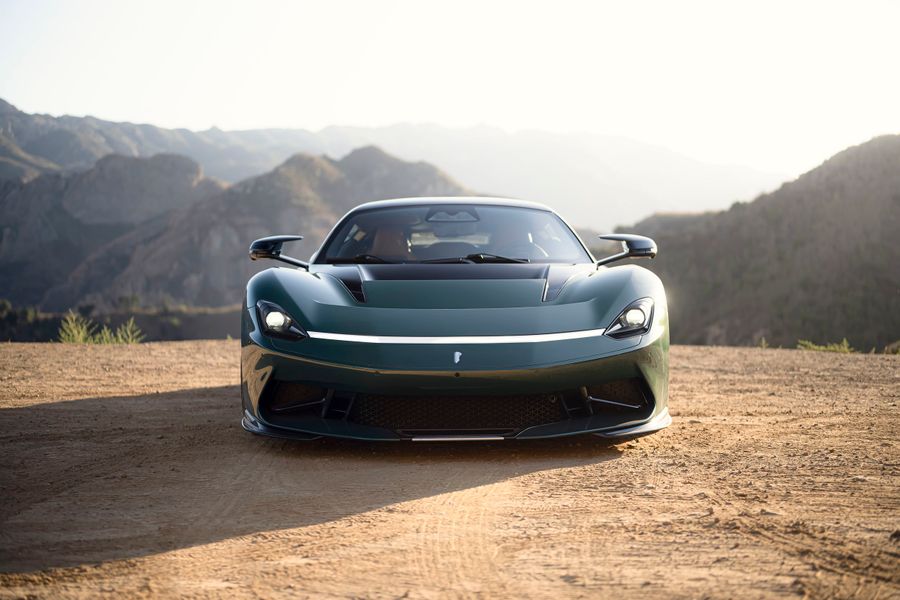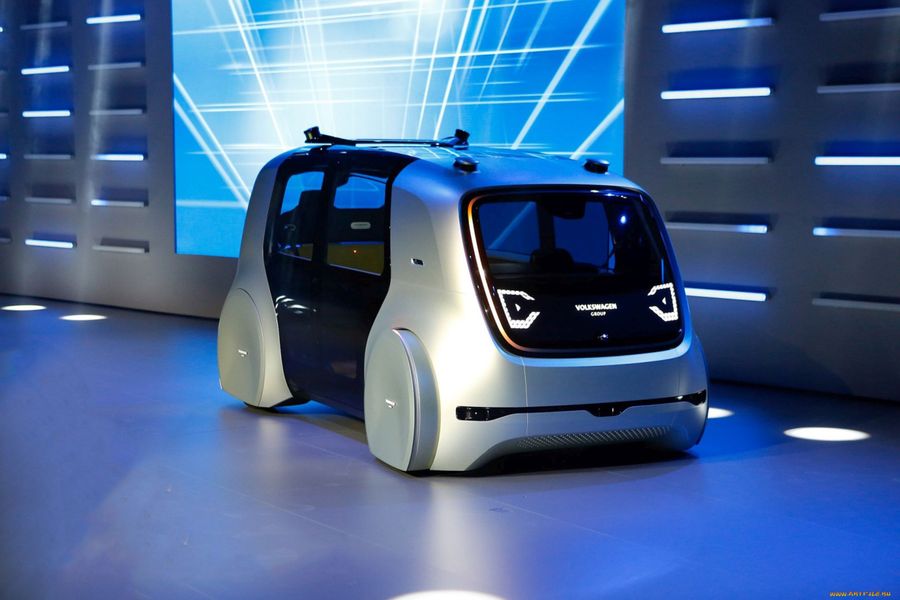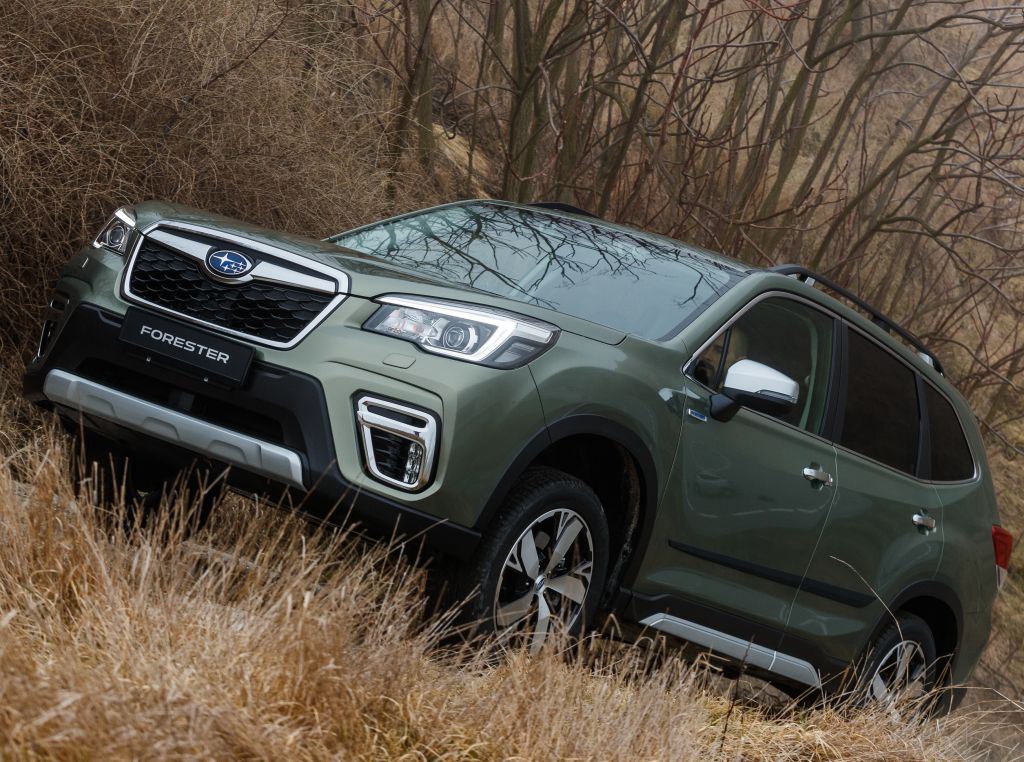
2018 Subaru Forester SUV. The fifth generation
The Subaru Forester is an all-wheel drive SUV from Subaru, first built on the chassis of the Impreza model in 1997. It has become popular in many countries around the world as a family cross-country vehicle. The name originates from the English word ‘forester’. In 2021, the fifth generation Forester, which debuted in 2018, could be purchased in Israel.
Exterior
The new 5th generation Subaru Forester was presented on March 28, 2018 at the New York International Auto Show. Just like the XV, it was based on the common SGP (Subaru Global Platform) platform. The body dimensions have not changed much, and the vehicle looks very similar to the previous generation. The first thing you notice is a large glass area. The Forester has always had large windows, unlike competitors with their narrow ‘loopholes’. Moreover, the vehicle does not feature a lowered sloping roofline, which gives makes the exterior more dynamic and reduces the second row head room.
Therefore, the Forester is the best in the class in terms of the ‘visibility index.’ As a result, despite the fact that the body does not look very progressive, convenience is still more important. This will be especially noticeable in such cramped places as a parking lot, a garage or a forest. The bonnet flange, well-visible from the driver’s seat, helps to feel the bonnet edge. A driver can safely approach an obstacle and easily control the distance. The creators of the fifth generation Forester have put the main focus on functionality. Excellent visibility from the passenger compartment, a large opening angle of the rear doors, control of the fifth door with two buttons, as well as wide and comfortable footrests make the everyday driving more exciting.
Excellent visibility from the passenger compartment, a large opening angle of the rear doors, control of the fifth door with two buttons, as well as wide and comfortable footrests make the everyday driving more exciting.
There are also many other functional solutions. Let’s start with the wide-swinging rear side doors. This makes it convenient to get out of the car, load large items or install a child seat. The entire Forester step rail is a wide and comfortable footboard. The tailgate opening has become more “square” for more convenient luggage loading. It is equipped with a more efficient electric drive and features a “close and lock” button next to the close button.
The car owners will appreciate the pockets in the backrests of the front seats, divided into several compartments for small items. Two USB sockets located nearby hint that you can hide your devices into a pocket. The manufacturers have taken into account all the complaints about the uneven operation of the heater and have improved its efficiency, while the seats heating area has increased (all the seats are heated).
Power trains and chassis
There are other signs of a car ‘growing up’ together with its customer. The turbo engines that used to captivate hot-tempered drivers are now retired. The range of power trains is represented exclusively by 2.0 and 2.5 naturally-aspirated engines. They have been significantly upgraded: direct injection, new pistons, connecting rods and a crankshaft. But the ‘younger’ engine still produces 150 hp, while the ‘older’ one can produce from 171 to 182-185 hp. The torque is 196 Nm at 4,000 rpm and 239 Nm at 4,400 rpm, respectively. The modernization was aimed at improving environmental performance, not sports performance. However, the dynamics are quite good: the maximum speed for a two-liter engine is 193 km/h and 207 km/h for a 2.5-liter engine, while acceleration to 100 km occurs in 10.3 seconds and 9.5 seconds, respectively. The SUV, sold in Israel, is equipped with a 2.5-liter engine producing 182 hp.
Cross-country ability
And here is another difference from competitors, which you can feel while driving. Subaru remains true to its permanent symmetrical all-wheel drive. How does it work today? Let’s analyze the fifth generation Forester as an example. The rear wheel traction is provided through a multi-plate clutch, which, in theory, can be completely blocked. But Subaru always goes its own way, and the brand’s multi-plate clutch is unlike the Haldex used by the majority of other manufacturers. Subaru has combined the clutch with a CVT, so the friction clutch couplings are never fully disconnected, as the manufacturer assures.
And here is another difference from competitors, which you can feel while driving. Subaru remains true to its permanent symmetrical all-wheel drive. Subaru has combined the clutch with a CVT, so the friction clutch couplings are never fully disconnected, as the manufacturer assures.
The fifth generation Forester has refused from a version with a manual gearbox with a mechanical center differential and a low range. Will this limit the SUV’s off-road performance? Now it is equipped with an upgraded CVT with an extended range, and the transmission allows you to keep the revs low and thereby save fuel at high speeds, and when driving at low speeds, it uses a higher gear ratio than before, and thus, in a sense, it works like the low range. You will not feel the lack of traction on the road.
Although the design of this SUV is very far from a real off-road vehicle. Just look at the completely lightweight spring suspension: the MacPherson strut at the front and the double wishbone suspension at the rear. This is offset by a decent 22cm ground clearance and excellent visibility. What about the geometric cross-country ability? The parameters coincide with the previous generation, except for the angle of approach (it became 3 degrees less).
Handling
The new Subaru Forester has become more serious, demonstrating smoother and calmer reactions. The noise level in the passenger compartment during acceleration has been reduced, so the Forester is among the best in its class. It is easy to notice that the travelling comfort has improved, just drive a car of the previous generation to compare.
Is there really nothing left of the legendary motor sport genes? They appear show themselves on top-soil roads. Unlike the passenger cars, the Forester can easily overcome all the potholes. In corners, sprinkled with small stones, the SUV starts recklessly sliding with all four wheels, while the stability control icon flashes alarmingly, but the electronics do not interfere. Everything is under control: the fifth Forester has a thrust vector control system, which slows down the inner wheels that are turning, but maintains enough traction on the outer wheels. As a result, the car can successfully enter a turn.
The steering response is noticeably faster thanks to the redesigned chassis and stiffer body. The body torsional stiffness has doubled, while the transverse stiffness has increased by one and a half times. The rear stabilizer bar is now attached directly to the body, reducing angular vibration by 50%. It remains to be noted that the disc brakes are all ventilated.
Equipment and trim levels
The Forester’s main driver assistant is the EyeSight system, which the manufacturer calls the world’s first stereo camera-based driver assistance system (two ‘eyes’ are located at the top of the windshield). According to the manufacturer, the accuracy of object recognition is higher than that of radar systems. In reality, the Forester confidently ‘sees’ the car in front and maintains a constant distance, accelerating and decelerating until it stops. Only pouring rain can confuse this system. Subaru’s statistics show that Japan recorded a 61 percent reduction in accidents with cars that have the EyeSight system.
In addition to the adaptive cruise control and automatic emergency braking described above, the system includes pre-crash accelerator control, driver fatigue assessment and lane keeping assist. It must be borne in mind that the electronics correctly recognize only well-readable markings and react to the lane departure in different ways: by sending a sound signal and an alert on the screen or with a light steering. It does not frighten the driver.
The Forester’s main driver assistant is the EyeSight system, which the manufacturer calls the world’s first stereo camera-based driver assistance system (two ‘eyes’ are located at the top of the windshield). According to the manufacturer, the accuracy of object recognition is higher than that of radar systems.
The new generation Forester now can select modes of off-road driving. Previously, it was possible to use only the X-Mode key, which only made the vehicle’s reactions smoother and gave the command to the CVT to simulate a lower gear, if possible. Now there are two modes: Snow/Dirt and Deep Snow/Mud. The latter automatically turns off the stabilization system so as not to prevent slipping. Moreover, the hill descent control system helps maintain a controlled and stable pace, even on slippery roads. To keep up with the times, Forester has Apple CarPlay, connecting the smartphone to the vehicle’s screen.
Israeli buyers can choose from four modifications of the Subaru Forester. The vehicle is available in the following eight body color variations: silver, white mother-of-pearl, bronze, green, blue, crimson red, gray and black metallic.


